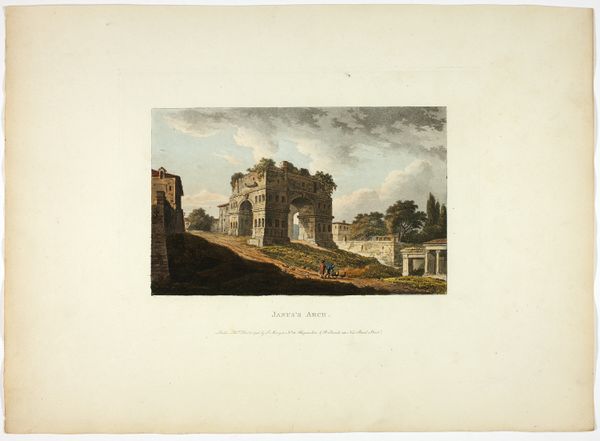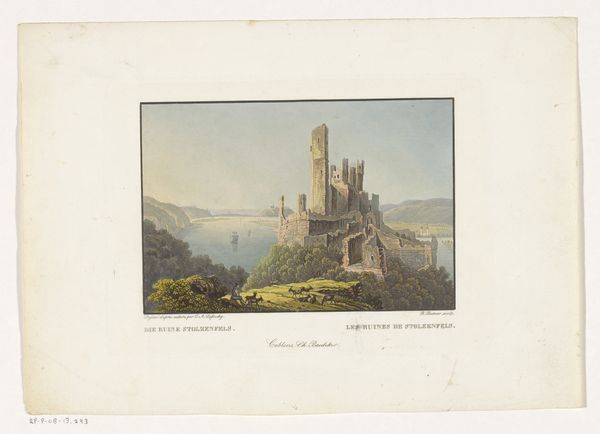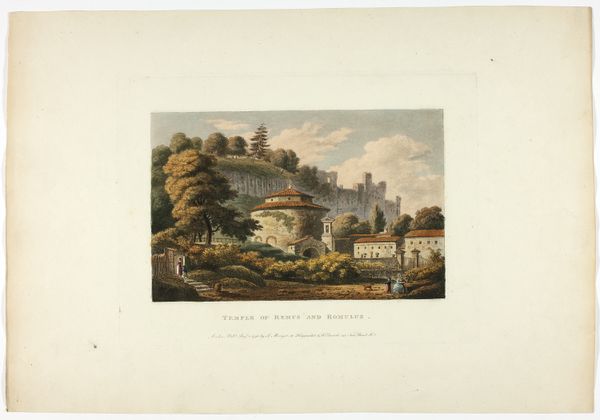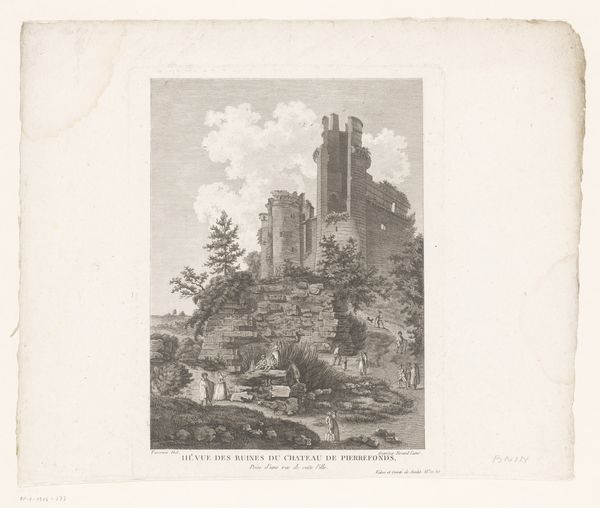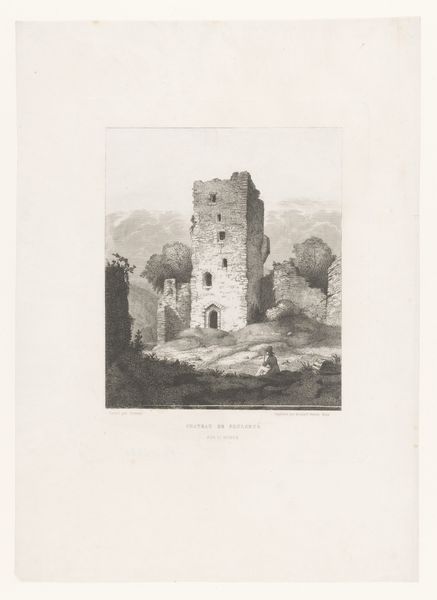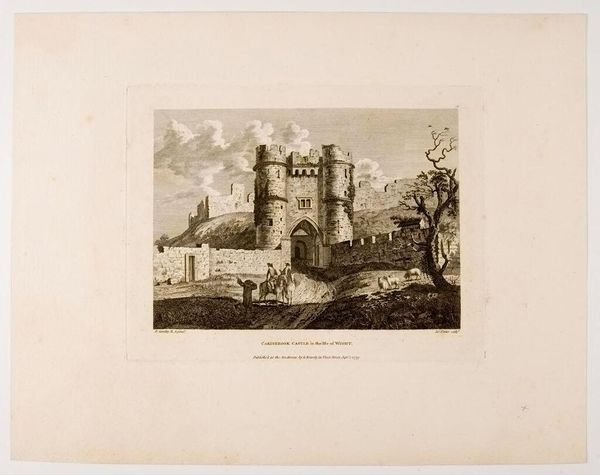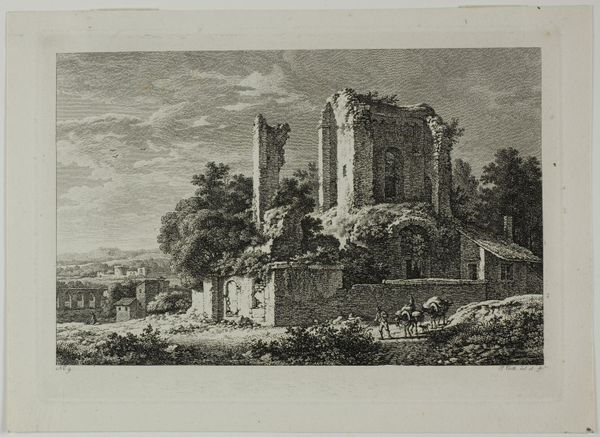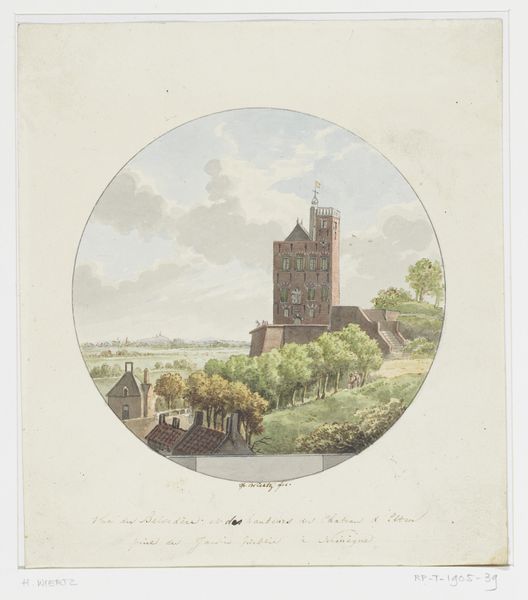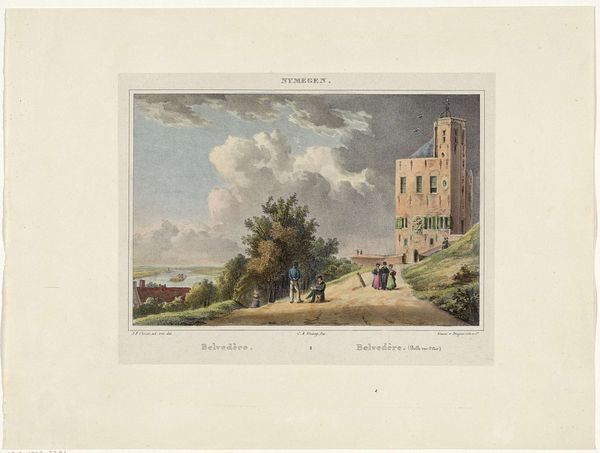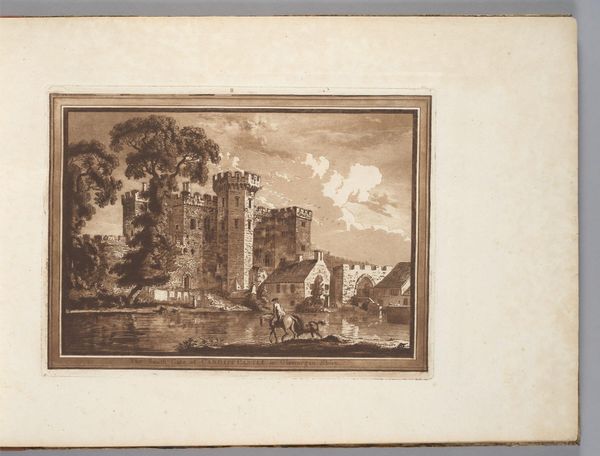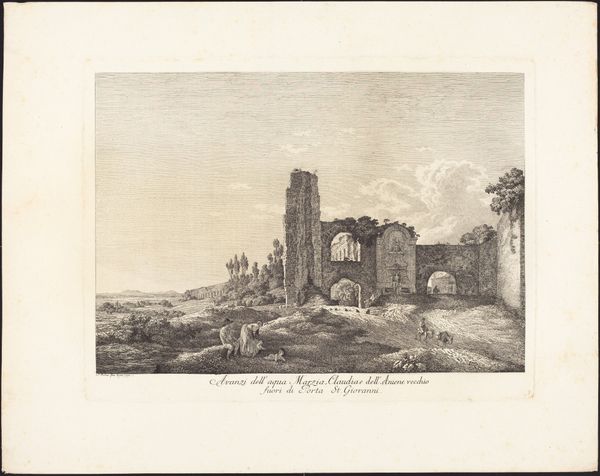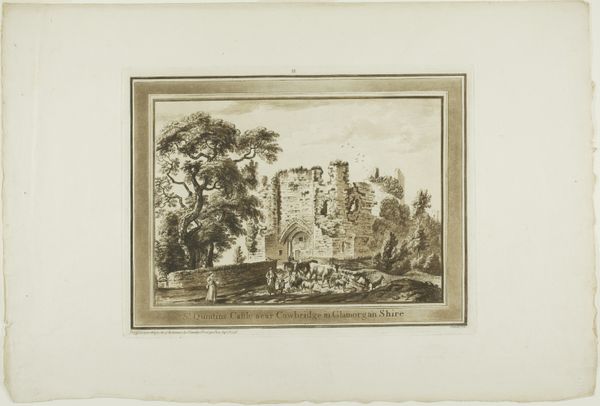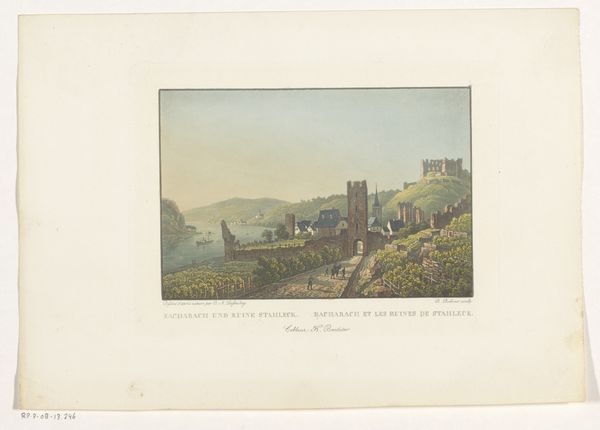
Trophy of Marius, plate thirty-one from the Ruins of Rome Possibly 1798
0:00
0:00
drawing, coloured-pencil, painting, print, paper, watercolor
#
drawing
#
coloured-pencil
#
water colours
#
painting
# print
#
landscape
#
classical-realism
#
paper
#
watercolor
#
coloured pencil
#
history-painting
#
academic-art
Dimensions: 330 × 448 mm (sheet)
Copyright: Public Domain
M. Dubourg's "Trophy of Marius," an etching from "Ruins of Rome," presents us with more than just crumbling architecture; it reveals a poignant commentary on the transience of glory. The ruined structure dominates the scene, a stark reminder of the vanity of human achievement. The symbolic weight of ruins is powerful. We find echoes of this sentiment across time and space, from the shattered monuments of ancient Egypt to Piranesi's dramatic depictions of Roman decay. Ruins embody a collective memory of fallen empires and faded grandeur. Consider the emotional resonance of standing before such a site. It evokes a sense of melancholy, prompting reflection on the cyclical nature of history and the inevitable decay that awaits all things. This melancholic feeling has a powerful force, engaging viewers on a deep, subconscious level. The Trophy of Marius, thus, becomes a stage upon which the drama of time unfolds. It's cyclical progression—from triumph to ruin, from presence to absence—reminds us that history is not linear but a continuous process of creation, destruction, and rebirth.
Comments
No comments
Be the first to comment and join the conversation on the ultimate creative platform.
